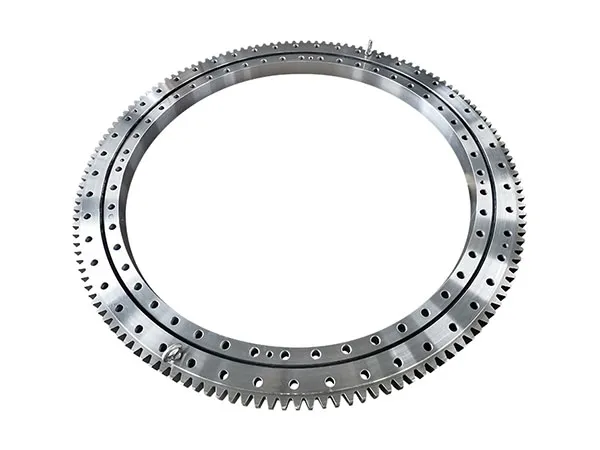Non-standard slewing bearings are crucial components in various heavy machinery and precision equipment, designed to handle significant axial, radial, and moment loads in highly specialized applications. Unlike standard bearings, their customization process is intricate, involving close collaboration between the client and the manufacturer to meet unique operational demands.
Non-standard slewing bearing customization process

1. Initial Consultation and Requirement Gathering
The process begins with a comprehensive understanding of the client’s needs. This involves:
Application Analysis: Understanding the specific machine or system where the slewing bearing will be used. This includes factors like the type of equipment (cranes, excavators, wind turbines, medical equipment, robotics, etc.), its operating environment (marine, high/low temperature, dusty, corrosive), and overall performance requirements.
Load Analysis: Detailed information on the static and dynamic loads the bearing will endure, including axial, radial, and overturning moment loads, as well as shock loads and vibration.
Dimensional Constraints: Precise dimensions of the mounting space, including outer diameter, bore size, width, and any specific mounting hole configurations.
Performance Specifications: Required rotational speed, precision (runout tolerances), stiffness, torque requirements, and expected service life.
Environmental Factors: Exposure to moisture, saltwater, chemicals, dust, extreme temperatures, and the need for specialized sealing or corrosion protection.
Special Features: Any unique requirements such as integrated gearing (internal, external, helical, worm gears), lubrication systems, control devices, or monitoring systems.
Material Preferences: While manufacturers often recommend materials, clients may have specific preferences or requirements for certain alloys (e.g., high-strength steel, stainless steel, specialized alloys like 42CrMo4, 50Mn, or even aluminum for lightweight applications).
Compliance and Certifications: Any industry-specific standards (e.g., ISO, AGMA, DEF STAN) or certifications required for the bearing.
2. Design and Engineering
Once the requirements are thoroughly understood, the engineering team commences the design phase:
Conceptual Design: Engineers develop initial concepts based on the gathered data, considering different slewing bearing types (e.g., four-point contact ball bearings, crossed cylindrical roller bearings, triple-row roller bearings, combined roller/ball bearings) that best suit the application.
Detailed CAD Modeling: Using advanced 3D modeling software, a detailed design of the non-standard bearing is created. This includes precise geometries of the inner and outer rings, raceways, rolling elements, cages/spacers, gearing, and sealing systems.
Material Selection: Based on load, environment, and performance requirements, appropriate materials are selected for the rings, rolling elements, and other components. This often involves specialized heat treatments to achieve desired hardness, wear resistance, and fatigue strength.
Structural Analysis (FEA): Finite Element Analysis (FEA) simulations are performed to validate the design’s integrity under various load conditions, predict stress distribution, deflection, and stiffness, and optimize the design for maximum performance and lifespan.
Lubrication System Design: Designing or recommending a suitable lubrication system (grease or oil) and specifying lubricants based on operating conditions. This includes determining lubrication intervals and potential for advanced lubrication systems.
…
More detailed information about the process of customizing non-standard slewing bearings can be found by clicking Visit:https://www.mcslewingbearings.com/a/news/slewing-bearing-customization-process.html



